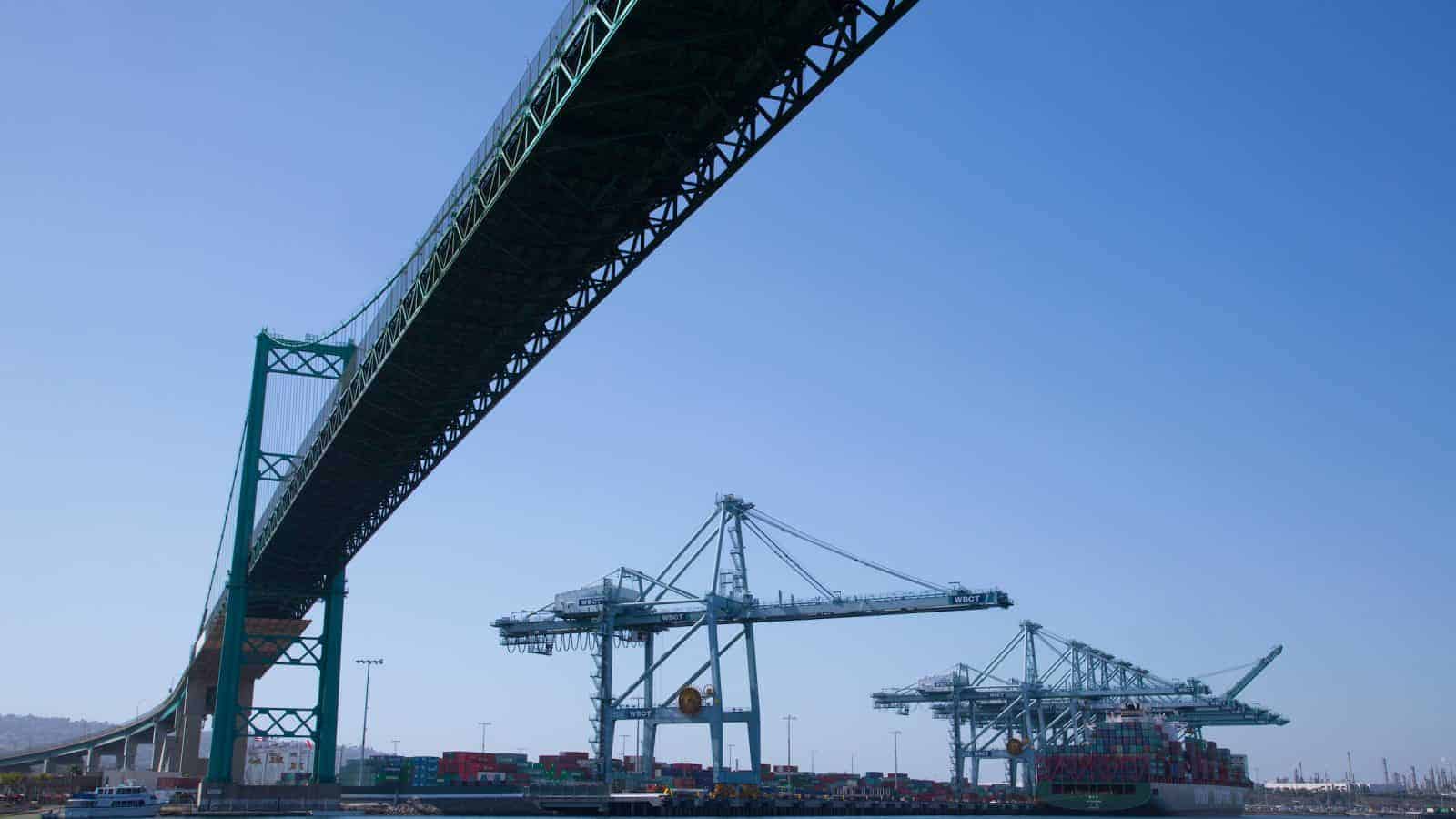Dockworker Labor Talks to Restart Amid Tension
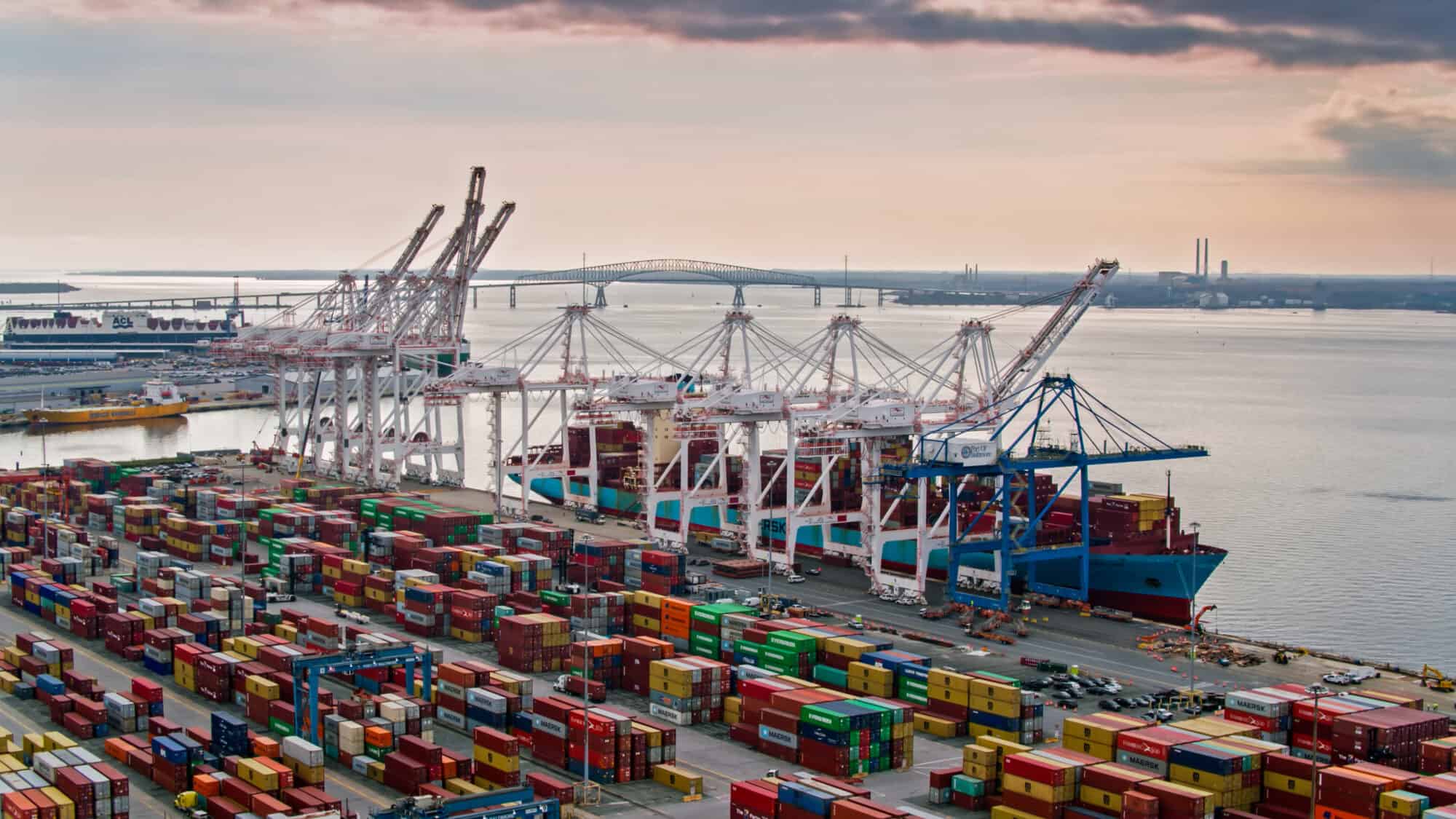
Contract talks between dockworkers and their employer on the East and Gulf coasts have yet to begin, but tensions are already flaring, The Wall Street Journal (subscription) reports.
What’s going on: “The International Longshoremen’s Association … is already threatening a strike against shipping companies and port employers if a deal on a new multiyear contract can’t be reached before the current agreement expires Sept. 30.”
- The ILA, which represents more than 45,000 dockworkers “at ports from Maine to Texas, has told local chapters to resolve local work issues with employers by May 17 so that a coast-wide deal can be negotiated before the current contract expires. Formal negotiations would be scheduled once the local agreements are reached.”
- Talks began in late 2022 but stalled a year ago.
The background: In September, after 14 months of often-tumultuous negotiations and several walkouts and work stoppages, West Coast dockworkers reached an agreement with their employer, the Pacific Maritime Association.
- The Biden administration stepped in to help broker that deal.
Why it’s important: “Any walkout would hit the gateways in the middle of the busiest part of the shipping season, when retailers and other importers prepare for holiday consumer sales.”
- To avoid potential delays, East Coast importers are expected to bring in holiday-season goods early this year or send more goods from Asia to the U.S. via West Coast ports.
- The large wage increases ILA is said to be pursuing could prove difficult for carriers to sustain, given the post-pandemic decline in freight demand.
U.S. “Very Concerned” About Critical Minerals
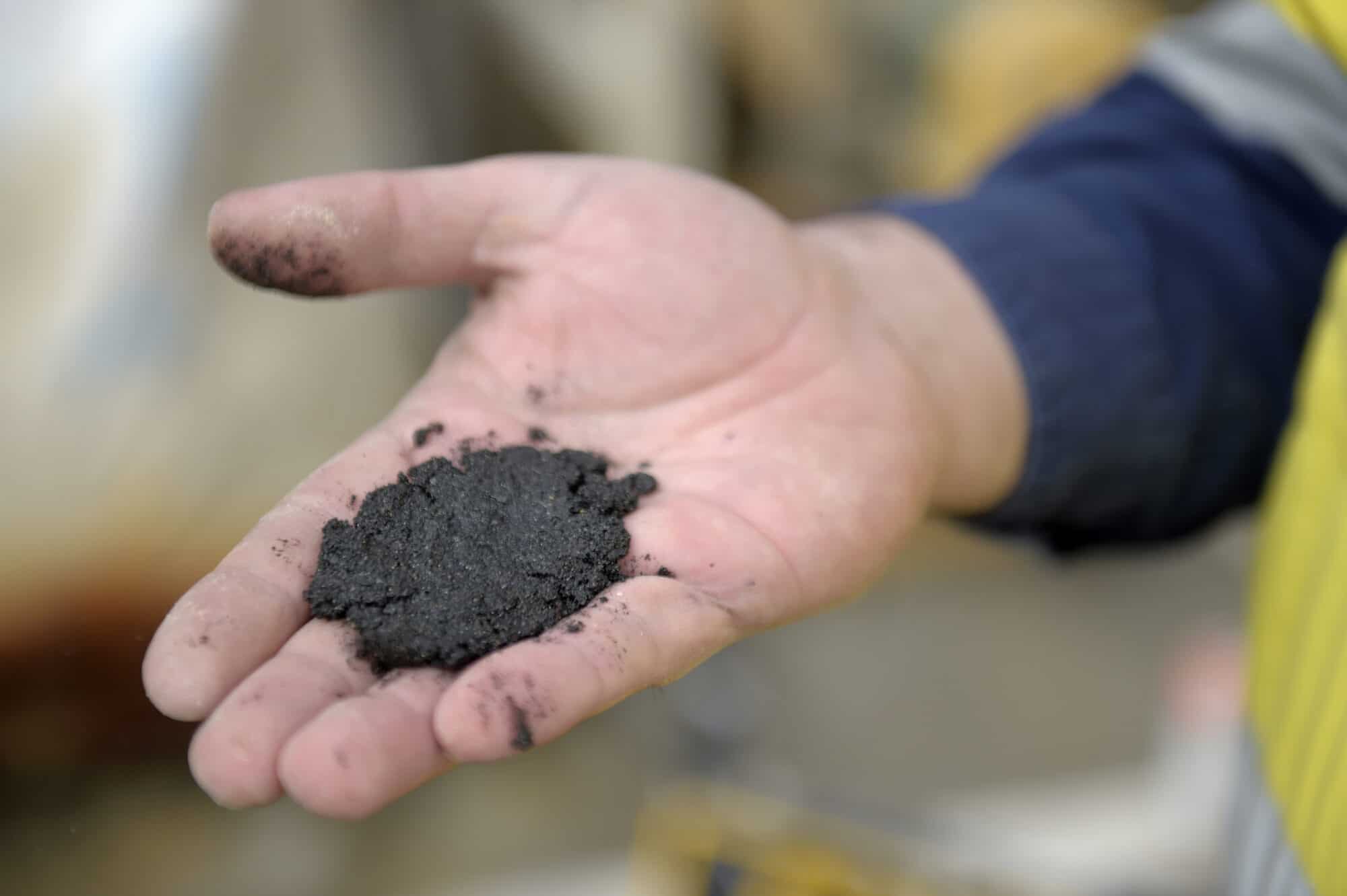
The Biden administration is “very concerned” about U.S. reliance on China for critical minerals, U.S. Energy Secretary Jennifer Granholm said Wednesday, according to CNBC.
What’s going on: China’s dominance in the world’s critical minerals supply chain is “one of the pieces of the supply chain that we’re very concerned about in the United States,” Granholm told the news outlet on the sidelines of the International Energy Agency’s 2024 Ministerial Meeting in Paris.
- China produces approximately 60% of all rare earth elements, which are critical to alternative-energy technologies, such as electric vehicles.
Why it’s important: “As part of a rapid uptick in demand for critical minerals, the IEA has warned that today’s supply falls short of what is needed to transform the energy sector,” according to the article.
What the administration is doing: Both production and processing of critical minerals “have to be addressed,” Granholm said.
- “And that’s why we are working very closely to ensure that we have identified which raw materials [or] critical minerals we need to be able to do our transition to a clean energy economy.”
The NAM says: “Other countries are taking all possible measures to develop domestic sources of critical minerals, and it should be a wake-up call to the U.S. that we need to be doing the same,” said NAM Vice President of Domestic Policy Brandon Farris. “We also need to reform our broken permitting system to get these projects operational as soon as possible.”
Manufacturers: New EPA Rule Directly Undermines President’s Manufacturing Agenda
Washington, D.C. – Following the decision by the Environmental Protection Agency to lower the National Ambient Air Quality Standards for fine particulate matter (PM2.5) to 9 micrograms per cubic meter, National Association of Manufacturers President and CEO Jay Timmons released the following statement:
“The Biden administration’s new PM2.5 standard takes direct aim at manufacturing investment and job creation, in direct contradiction to the president’s stated goal of strengthening manufacturing in communities all across America.
“The new standard of 9 and the EPA’s paltry 60-day implementation window will guarantee projects currently under permitting review will have to comply with this onerous decision, making an already gridlocked permitting system further gridlocked.
“Manufacturers in America will also be hard pressed to make long-term investment plans domestically as our global competitors have set more reasonable goals. The EU standard is currently 25, and a proposal there would be to reach 10 by 2030. The UK has a target of 10 by 2040.
“Governors and mayors will now have to make difficult decisions under this untenable standard. New manufacturing investments envisioned by the CHIPS and Science Act, the Bipartisan Infrastructure Law and the energy provisions of the Inflation Reduction Act will be subject to these new requirements. This revised standard will force some communities to choose which—if any—investments can proceed without running afoul of the EPA’s decree.
“By implementing such a radical standard here, our country is ceding our competitive advantage with an unforced error. All of these choices could have been avoided with a more sensible standard and a longer implementation runway.
“The EPA itself says that some 70% of particulate matter comes from nonmanufacturing sources, such as wildfires (29%), agriculture and prescribed fires (15%), crop and livestock dust (12%), unpaved road dust (10%), paved road dust (3%) and “dust” (2%). Before forcing actions that will curtail manufacturing investment and infrastructure development, the federal government should first determine how to deal with what is occurring naturally.
“To be sure, manufacturers proudly stood up for funding in the Bipartisan Infrastructure Law, CHIPS and Science Act investments and many of the policy provisions outlined in the IRA. But there is no doubt that our country will be unable to realize the benefits of these legislative accomplishments with this new rule in place. As counties and cities find themselves in nonattainment, this grave mistake will drive investment away from the United States, derail permitting and weaken the economy for all.
“The U.S. already has some of the strictest air standards in the world, and thanks to manufacturers’ innovation and leadership, some of the cleanest air and best environmental records. Manufacturers will consider all options to reverse this harmful and unnecessary standard, because it is our duty to stand against policies that hold our country back.”
Background:
Per the EPA: Nonattainment is any area that does not meet (or that contributes to ambient air quality in a nearby area that does not meet) the national primary or secondary ambient air quality standard for NAAQS.
The EPA recently reported that PM2.5 concentrations have declined by 42% since 2000, driven by major emissions reductions from both mobile sources and the power sector. As a result, America’s air is cleaner than ever.
-NAM-
The National Association of Manufacturers is the largest manufacturing association in the United States, representing small and large manufacturers in every industrial sector and in all 50 states. Manufacturing employs nearly 13 million men and women, contributes $2.85 trillion to the U.S. economy annually and accounts for 53% of private-sector research and development. The NAM is the powerful voice of the manufacturing community and the leading advocate for a policy agenda that helps manufacturers compete in the global economy and create jobs across the United States. For more information about the NAM or to follow us on Twitter and Facebook, please visit www.nam.org.
NAM Pushes for Transparent Conclusion of Tariff Review
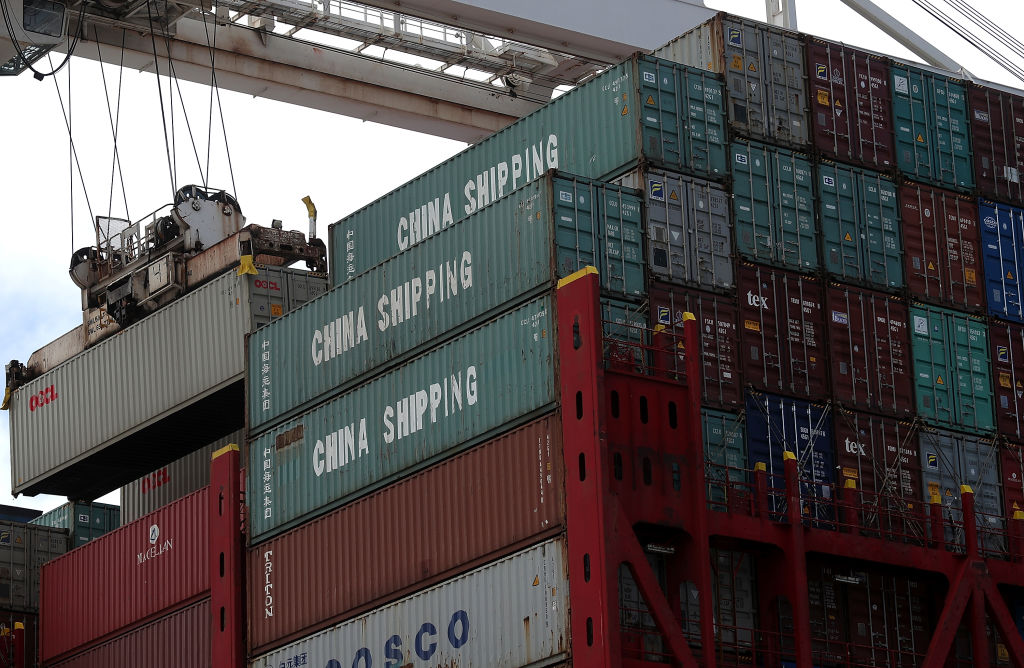
The Biden administration is nearing the end of a lengthy review on whether to adjust or extend tariffs on a variety of goods and materials from China—and the NAM is working to make sure manufacturers’ voices are heard.
The background: Following a 2017 investigation into China’s trade practices, the Trump administration put in place a set of levies on imported goods from China—called Section 301 tariffs—intended to incentivize change in practices by China that were found by the Office of the U.S. Trade Representative to be “unreasonable or discriminatory.”
- These included policies and practices related to technology transfer, intellectual property and innovation.
The review: In May 2022, USTR initiated a legally required four-year review of the Section 301 tariffs that focused on tariff efficacy in changing Chinese discriminatory practices and the impact of the tariffs on the U.S. economy, workers and consumers, among other considerations.
- More than 18 months later, the review remains unfinished. The NAM is urging USTR to finish and publish it—and to take actions that reduce the burdens on manufacturers while maintaining appropriate leverage to incentivize China to adhere to bilateral and multilateral commitments.
- “Ideally, USTR will conclude the four-year review in the next few weeks and make the results public,” said NAM Senior Director of International Policy Ali Aafedt. “We would like to see the results reflect the 1,498 public submissions USTR received during the process and the reduction or removal of some of the tariffs that are harming manufacturers in the U.S. more than they’re creating leverage on China.”
The exclusions: There are 429 existing exclusions from the tariffs—including 77 COVID-19-related products and 352 reinstated exclusions—which are in effect through May 31.
- The NAM has also been pushing for a new process that allows manufacturers to ask the government to exclude specific products they need from the tariffs.
- “The NAM has been calling for a new, fair and transparent Section 301 tariff exclusion process that would allow all U.S. stakeholders an opportunity to seek relief or weigh in on the existing tariffs,” said Aafedt. “The last opportunity to petition USTR for relief from Section 301 tariffs was in 2020, and a new exclusion process will help to better align the tariffs with U.S. economic goals.”
The outlook: Reports such as this one from The Wall Street Journal indicate that the Biden administration will look to rebalance the tariffs, potentially reducing those that are not in the U.S. interest and raising tariffs on other items, including, potentially, on imports from China in the electric vehicle and battery sectors.
- “The NAM will continue to push for a more strategic approach,” said Aafedt.
If your company has interest in a specific existing exclusion, USTR is seeking feedback here by Feb. 21.
Timmons: Biden Administration’s Agencies Are Undercutting the President’s Own Stated Goals Again with LNG Decision
Washington, D.C. – Following the Department of Energy’s announced freeze on export permits for new liquified natural gas projects, National Association of Manufacturers President and CEO Jay Timmons released the following statement:
“Once again the Biden administration’s agencies are undercutting President Biden’s own stated goals. The president has said the following:
- ‘Where is it written that America can’t lead the world in manufacturing again? … Now, thanks to all we’ve done, we’re exporting American products and creating American jobs.’[1]
- ‘This nation used to lead the world in manufacturing, and we’re going to do it again.’[2]
- ‘We just have to remember who we are. We’re the United States of America…There’s not a single thing we can’t do when we put our minds to it. And we can strengthen our energy security now, and we can build a clean energy economy for the future at the same time. This is totally within our capacity.’’[3]
- ‘[W]e’re working closely with Europe and our partners to develop a long-term strategy to reduce their dependence on Russian energy.’[4]
- ‘[W]e’re a great nation. We’re the greatest nation on the face of the earth. We really are. That’s the America I see in our future.”[5]
“Manufacturers call on the president to direct his agencies to support his agenda and to end their political war on the manufacturers who power American jobs, our economy and our national security. Today’s decision weakens our country, while giving Russia an upper hand as Europe and Asia look to transition their energy needs.”
[1] State of the Union Address, Feb. 7, 2023.
[2] Remarks at a Political Rally Hosted by Union Members, June 17, 2023.
[3] Remarks on Actions to Strengthen Energy Security and Lower Costs, Oct. 19, 2022.
[4] Remarks Announcing U.S. Ban on Imports of Russian Oil, Liquefied Natural Gas and Coal, March 8, 2022.
[5] Remarks at First Campaign Speech of the 2024 Election, Jan. 5, 2024.
-NAM-
The National Association of Manufacturers is the largest manufacturing association in the United States, representing small and large manufacturers in every industrial sector and in all 50 states. Manufacturing employs nearly 13 million men and women, contributes $2.85 trillion to the U.S. economy annually and accounts for 53% of private-sector research and development. The NAM is the powerful voice of the manufacturing community and the leading advocate for a policy agenda that helps manufacturers compete in the global economy and create jobs across the United States. For more information about the NAM or to follow us on Twitter and Facebook, please visit www.nam.org.
Congressional Tax Writers Unveil NAM-Supported Tax Deal

On Tuesday, Congress took an important step toward restoring three of manufacturers’ top tax priorities, as key congressional leaders unveiled a bipartisan tax agreement long sought by the NAM.
What’s going on: The $78 billion Tax Relief for American Families and Workers Act—a compromise between House Ways and Means Committee Chairman Jason Smith (R-MO) and Senate Finance Committee Chairman Ron Wyden (D-OR)—would restore immediate R&D expensing, return to a pro-growth interest deductibility standard and reinstate full expensing (also known as 100% accelerated depreciation) for businesses’ capital investments.
- The framework also includes disaster tax relief and $33 billion to partially extend a child tax credit expansion from 2021.
The background: For nearly seven decades, the tax code allowed businesses to deduct R&D costs immediately. But starting in 2022, a change required companies to amortize the costs over a period of years.
- Also in 2022, a stricter interest limitation—which acts as a tax on investment—went into effect. And last year, full expensing began to phase down.
The NAM’s role: The NAM was instrumental in the deal, having made the business case for the tax provisions’ reinstatement to lawmakers for many months, including via an ad campaign, “Keep America Resilient.”
What’s next: The NAM is urging congressional leadership to schedule a vote on the tax deal. Manufacturers can add their voices at the NAM’s Tax Action Center.
Our take: “Manufacturers appreciate Chairman Smith and Chairman Wyden’s work to reach a bipartisan tax deal with key provisions to advance U.S. economic competitiveness and support manufacturing job creation,” NAM Managing Vice President of Policy Chris Netram said in a social post Tuesday.
- “Congress must move this legislation forward immediately. The time to act is now.”
NAM in the news: Bloomberg Tax (subscription) cited the NAM’s support of the legislation, while Punchbowl News reported on the NAM’s ads in multiple Kentucky papers and Louisiana’s Shreveport Times urging support of the legislation.
NAM Redoubles Tax-Priority Push

With tax bill negotiations left unfinished before lawmakers left for the holiday break, the NAM is hitting the ground running in 2024.
- The NAM continues to push for manufacturers’ top three tax priorities: immediate R&D expensing, a pro-growth interest deductibility standard and full expensing for capital investments.
What’s going on: Congress has just a few weeks to reach a government funding deal before a Jan. 19 deadline, “when funding for a range of government agencies is scheduled to lapse,” according to POLITICO. There is a second funding deadline on Feb. 2.
- The NAM has been calling on Congress to prioritize inclusion of the three tax provisions in any measure it passes.
- The NAM recently led a coalition of more than 1,300 businesses and associations in highlighting the urgent need for congressional action.
What’s needed: Congress must reinstate immediate R&D expensing; loosen a strict interest limitation; and return to full expensing (also known as 100% accelerated depreciation) for businesses, the NAM said.
Why it’s important: If these fixes aren’t made, manufacturing R&D, jobs and competitiveness could all suffer.
- Some 78% of manufacturers say the higher tax burden has decreased the funds available to expand their manufacturing activities within the U.S., according to the Q2 2023 NAM Manufacturers’ Outlook Survey.
The last word: “These tax provisions are some of the most critical issues facing manufacturers today,” said NAM Vice President of Domestic Policy Charles Crain.
- “Congress must act immediately to protect manufacturing jobs and maintain America’s competitiveness on the world stage.”
Act now: Visit the NAM’s Tax Action Center to send a message directly to Congress about these critical priorities.
Manufacturers: New Hydrogen Tax Credit Regulations Fail to Incentivize Growth and Investment
Washington, D.C. – National Association of Manufacturers President and CEO Jay Timmons released the following statement in response to new proposed regulations on the Clean Hydrogen Production Tax Credit:
“The hydrogen tax credit has the potential to be the world’s strongest tool to build a hydrogen economy, but the Treasury Department proposal would impose so many hurdles to qualifying for the credit that the Biden administration will be left unable to achieve some of its top economic and environmental goals. Manufacturers are deeply disappointed with today’s announcement.
“Hydrogen is vital to reducing carbon emissions and to energy security efforts. If these regulations are put into place, America will lose out on job-creating investments across the country. To incentivize truly transformative growth in the necessary infrastructure to produce, transport and use hydrogen, the Biden administration should finalize a flexible credit that rejects additional requirements that were not included in the original legislation. And to realize the full potential of Inflation Reduction Act provisions, the CHIPS and Science Act and more, permitting reform must be a top priority in the new year.”
Background: The NAM has been urging the Treasury Department to create a flexible credit that rejects additionality and time matching provisions and provides a mechanism that supports carbon capture. More information on the NAM’s advocacy and the impact of these tax credit provisions can be found here.
-NAM-
The National Association of Manufacturers is the largest manufacturing association in the United States, representing small and large manufacturers in every industrial sector and in all 50 states. Manufacturing employs nearly 13 million men and women, contributes $2.75 trillion to the U.S. economy annually and accounts for 53% of private-sector research and development. The NAM is the powerful voice of the manufacturing community and the leading advocate for a policy agenda that helps manufacturers compete in the global economy and create jobs across the United States. For more information about the NAM or to follow us on Twitter and Facebook, please visit www.nam.org.
NAM Statement on Southern Border Closures
Washington, D.C. – National Association of Manufacturers President and CEO Jay Timmons released the following statement on U.S. Customs and Border Protection’s closure of two critical rail ports in Texas:
“Each day that rail operations at Eagle Pass and El Paso are suspended, more American jobs are put at risk. Snarling supply chains in this way could throw manufacturing production into disarray. Mexico is the United States’ largest trading partner, which means this shutdown threatens to inject serious uncertainty into the economy heading into the New Year.
“Manufacturers support CBP in their mission to protect national security, but stifling trade between the U.S. and Mexico is a direct threat to our economic competitiveness. It is not the solution to immigration challenges, but it does wrongly punish those who are not at fault. The NAM will continue working with the White House, CBP and leaders in the House and Senate to swiftly reopen the rail ports. This is yet another painful consequence of our broken immigration system, and our leaders need to recognize the urgency of fixing that system. Manufacturers are focused on solutions that uphold our laws and strengthen our economy.”
-NAM-
The National Association of Manufacturers is the largest manufacturing association in the United States, representing small and large manufacturers in every industrial sector and in all 50 states. Manufacturing employs nearly 13 million men and women, contributes $2.91 trillion to the U.S. economy annually and accounts for 53% of private-sector research and development. The NAM is the powerful voice of the manufacturing community and the leading advocate for a policy agenda that helps manufacturers compete in the global economy and create jobs across the United States. For more information about the NAM or to follow us on Twitter and Facebook, please visit www.nam.org.
NAM Goes All Out for Tax Priorities
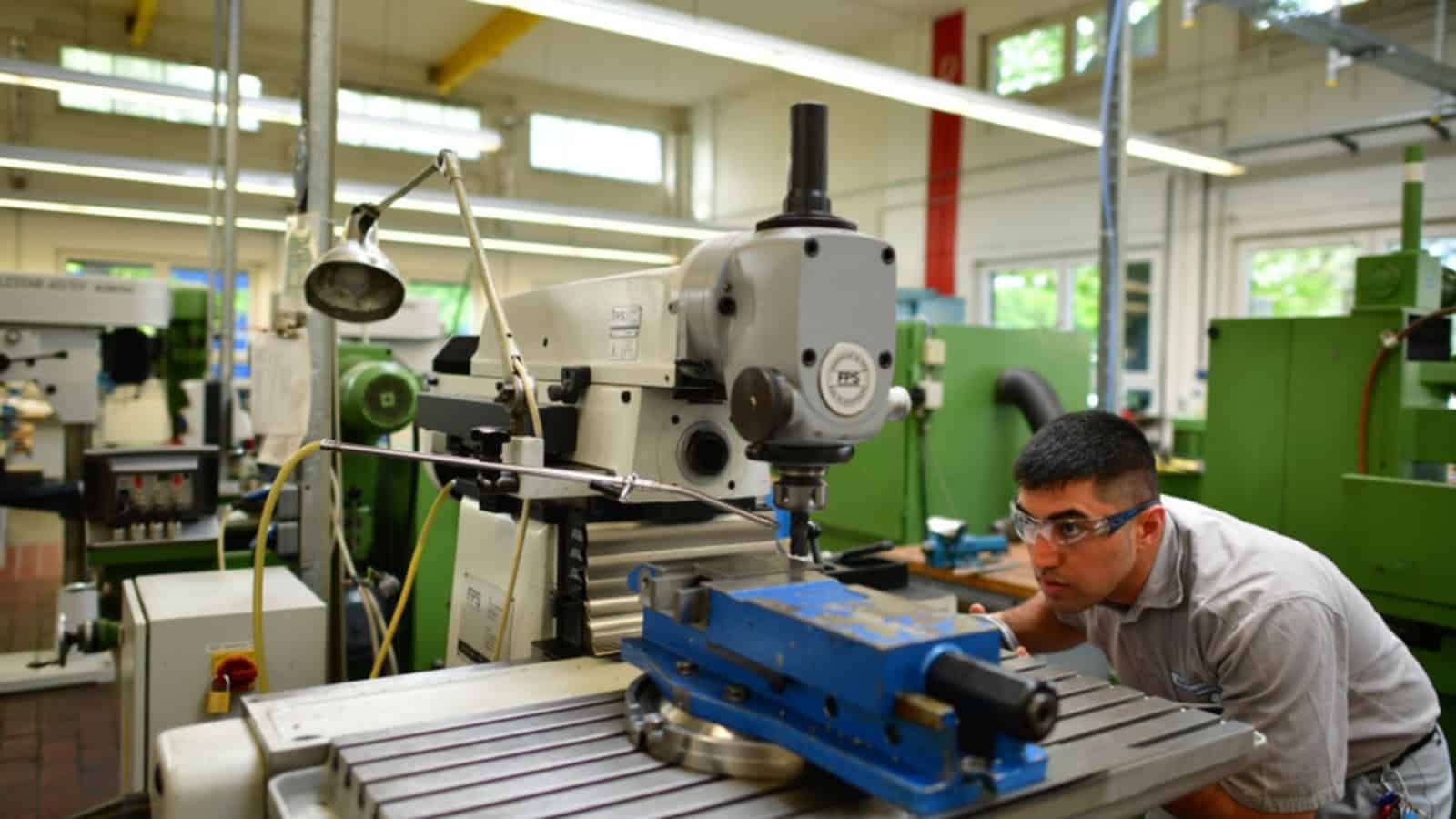
The NAM is firing on all cylinders to accomplish manufacturers’ top tax priorities: restoring immediate R&D expensing, pro-growth interest deductibility and full expensing.
Time is running out, as Congress must act by early 2024 to allow manufacturers to benefit from these provisions for the 2022 and 2023 tax years. Here’s what the NAM is doing to reach the finish line and why it matters so much to the industry and to the economy as a whole.
What we’re doing: The Executive Committee of the NAM Board of Directors recently sat down with House Speaker Mike Johnson (R-LA) to emphasize the importance and urgency of these measures. The Executive Committee has also raised the issue directly with the White House, and the NAM’s members—90% of which are small and medium-sized firms—have been contacting legislators to urge immediate action since early this year.
- In addition, while pressing the case relentlessly with the White House and congressional leaders himself, NAM President and CEO Jay Timmons has met personally with House and Senate tax negotiators to make manufacturers’ case for these reforms.
- NAM experts have also hosted multiple briefings for key legislators and congressional staffers, featuring manufacturers who explained how the withdrawal of these policies has harmed their businesses.
- Ratcheting up the ante on air and online, the NAM has applied pressure publicly in key districts, running a new ad campaign urging congressional action that has garnered about 80 million impressions so far. It also launched an action center to help manufacturers contact their legislators and spotlight the numerous companies that will be hard hit if pro-growth policies are not reinstated.
Why it matters: All three of these tax provisions are crucial to manufacturers’ ability to innovate, invest in their employees and make the American economy more competitive.
- R&D: The U.S. is one of only two countries (the other being Belgium) that doesn’t permit immediate expensing of R&D costs, a vital incentive for innovation. China, on the other hand, gives companies a “super deduction” for R&D expenses.
- Interest deductibility: A recent tax policy change made it more expensive for manufacturers to make critical purchases for their facilities, by imposing a stricter standard for deducting interest. This is a particularly heavy burden for a capital-intensive industry like manufacturing, amounting to a tax on companies’ investments in their operations and workers.
- Full expensing: This provision allows companies to expense their equipment purchases in the year they are made, supporting manufacturers’ investments in their businesses. But the policy is set to be phased out soon and must be saved, as it is crucial for small and medium-sized manufacturers looking to expand their operations.
The last word: “Manufacturing is the backbone of America, and the NAM is going all-out to make sure Congress acts on these critical priorities,” said NAM Managing Vice President of Policy Chris Netram. “Right now, leaders on Capitol Hill need to hear from manufacturers in their communities with a simple, clear message—act on our critical tax priorities now.”
Take action: Congressional leaders, including Speaker Johnson, have recently pointed out a need to hear from more manufacturers. Lend your voice—check out the resources in the action center to learn more.
